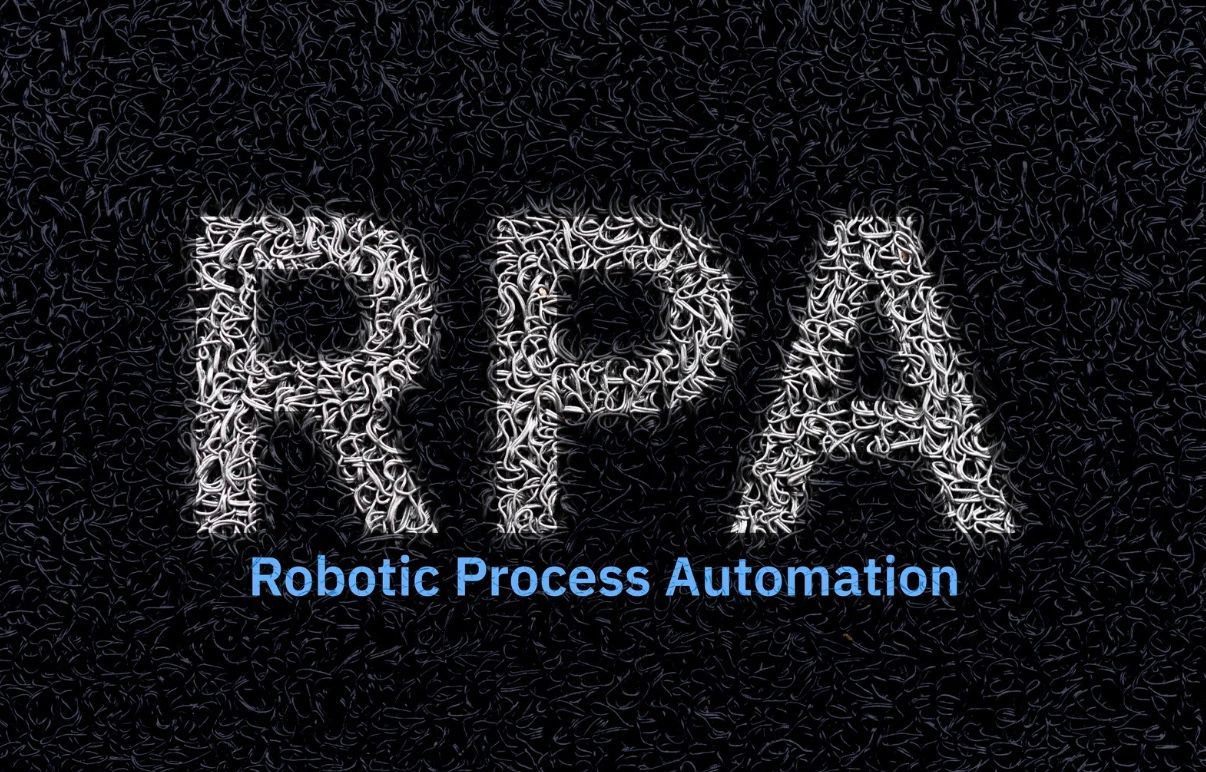Exploring RPA: Benefits and Applications in Real Life
Exploring RPA: Benefits and Applications in Real Life

Key Highlights
● Robotic Process Automation (RPA) uses software to automate digital tasks, boosting business efficiency.
● This automation technology relies on RPA bots to handle high-volume, repetitive tasks with speed and accuracy.
● There are three main types of RPA: attended, unattended, and hybrid, each suiting different business needs.
● Key benefits include significant cost savings, enhanced productivity, and improved employee and customer experiences.
● RPA is transforming industries like finance, healthcare, and manufacturing through effective process automation.
● Getting started involves identifying the right processes and choosing a scalable automation platform.
Introduction
Are you looking for a way to make your business more efficient and productive? Robotic Process Automation (RPA) might be the answer. This software technology is a cornerstone of modern digital transformation, enabling companies to streamline operations with incredible speed and accuracy. By handling routine digital tasks, RPA paves the way for powerful business automation. This guide explores what RPA is, how it works, and the real-world benefits it can bring to your organization.
How RPA is Revolutionizing Workflow in Organizations
Understanding Robotic Process Automation (RPA)
At its core, Robotic Process Automation is a method of business process automation that uses software "bots" to perform digital tasks that people usually handle. Think of it as a digital workforce that can take on high-volume, repetitive jobs like data extraction, filling out forms, and transferring files. This RPA technology is known for its reliability and precision.
Unlike some complex automation solutions, one of RPA's defining features is its simplicity. You don't need to be a coding expert to set up automations. As this technology evolves, it integrates with AI to handle even more complex use cases, accelerating your process automation journey. Let's look closer at what RPA means for business automation and how it operates.
What is RPA in Business Automation?
In the context of business automation, RPA is a technology that uses a software robot to mimic human actions and complete digital tasks. This isn't a physical robot but a program that operates on a computer, interacting with applications and systems just like a person would. It can log into applications, copy and paste data, move files, and fill in forms.
The primary goal of this automation technology is to free your employees from monotonous and repetitive work. By automating these rule-based processes, your team can dedicate their time and energy to more strategic, creative, and high-value activities that require human intelligence and decision-making.
Essentially, RPA acts as a bridge, connecting different software tools and systems without needing complex integrations. It works with your existing IT infrastructure, including legacy systems, to streamline workflows and drive efficiency across your entire organization.
How Does RPA Work? Core Features Explained
So, how does this all come together? RPA bots work by following a predefined set of instructions to complete business tasks. These bots interact with applications through the user interface (UI), just like a human would. For example, a bot can "read" what's on a screen, identify where to click, and type information into fields.
This process is configured on an automation platform where you can design, deploy, and manage your RPA bots. You can record a process for the bot to follow or use a drag-and-drop interface to build the workflow step-by-step. Once programmed, the bot can execute its tasks with minimal to no human intervention.
Key features of RPA include:
● Low-Code/No-Code Development: Allows users without coding skills to build automations.
● Cross-System Integration: Works across various applications, from spreadsheets to enterprise systems.
● Scalability: Capable of orchestrating thousands of automations simultaneously.
● Audit Trails: Generates detailed logs of every action for compliance and monitoring.
Types of RPA Solutions
When considering RPA solutions, it's important to know that they are not one-size-fits-all. The type of RPA you choose will depend on your specific business needs and the processes you want to automate. Different RPA tools offer different functionalities, from simple task automation to complex, enterprise-wide orchestration on a unified automation platform.
Unlike traditional automation that often requires deep system integration and coding, RPA works at the surface level, mimicking human interactions. This distinction makes it more flexible and easier to deploy. Let's explore the main types of RPA and how they differ from older automation methods.
Attended, Unattended, and Hybrid RPA
RPA solutions generally fall into three categories, each designed for different scenarios. Understanding them helps you decide which is right for your manual tasks.
Attended automation, for instance, works alongside your employees. It lives on a user's device and is typically triggered by a human command to assist with specific digital tasks in real-time. This is perfect for customer service or IT helpdesk operations where bots can help agents find information faster.
On the other hand, unattended automation operates independently without human intervention. These bots run in the background on a server, executing scheduled, high-volume tasks like data entry or report generation. Finally, hybrid automation combines both, allowing bots and humans to collaborate on complex, end-to-end processes.
● Attended RPA: Assists with real-time, interactive tasks.
● Unattended RPA: Runs independently on back-office processes.
● Hybrid RPA: Blends bot and human collaboration for complex workflows.
Differences Between RPA and Traditional Automation
You might be wondering how RPA technology differs from traditional automation approaches. The main distinction lies in how it interacts with computer systems. Traditional automation often involves writing scripts and connecting to systems through APIs, which can be complex and require specialized development skills.
RPA, in contrast, is designed to mimic human actions on the graphical user interface (GUI). It "watches" a user perform a task and then replicates those steps. This makes it much more accessible for non-technical users and allows for faster implementation since it doesn't require changes to the underlying IT infrastructure.
Here are some key differences:
● Interface: RPA works on the UI, while traditional automation often uses APIs.
● Flexibility: RPA can easily adapt to process changes without extensive recoding.
● Skill Level: RPA platforms often feature low-code tools, making them user-friendly.
● Implementation Speed: RPA projects can be deployed much faster than traditional process automation initiatives.
Key Benefits of RPA for Organizations
The benefits of RPA extend far beyond just automating tasks. Implementing this technology can have a powerful, positive impact on your entire organization. Right from the start, you'll see measurable returns like significant cost savings and greater accuracy. As you scale your automation efforts, these advantages multiply, boosting operational efficiency across the board.
This ripple effect leads to improved process efficiency and can fundamentally transform how your business operates. Below, we'll examine how RPA drives cost reduction and what it means for your team's productivity and overall employee experience.
Process Efficiency and Cost Reduction
One of the most immediate benefits of RPA is a dramatic improvement in process efficiency. Software robots work around the clock without breaks, completing tasks in minutes that might take a human hours. This speed significantly cuts down processing times for everything from invoicing to data analysis, allowing your business to operate much faster.
This increased efficiency directly translates into major cost savings. By automating high-volume, repetitive tasks, you can reduce operational costs associated with manual labor. A successful RPA implementation means fewer resources are spent on monotonous work, and the risk of costly human error is virtually eliminated since bots perform tasks with perfect accuracy.
Furthermore, because RPA is application-agnostic, it can connect different systems without requiring expensive and time-consuming changes to your existing IT infrastructure. This ability to operate across environments delivers enterprise-wide efficiencies and a quicker return on your investment.
Enhancing Productivity and Employee Experience
Beyond the numbers, RPA has a profound impact on your most valuable asset: your people. By automating repetitive tasks, you free your human workers from the burden of tedious, monotonous jobs. This shift allows them to focus on more engaging and fulfilling strategic work, such as problem-solving, building client relationships, and innovation.
This transition not only boosts overall productivity but also greatly enhances the employee experience. When employees are given the opportunity to apply their creativity and critical thinking skills, job satisfaction rises. They are no longer bogged down by mind-numbing data entry or form filling.
Ultimately, RPA empowers your team to work smarter, not harder. It simplifies workflows and gives your employees the time and mental space to contribute in more meaningful ways. This positive change in day-to-day work can lead to a more motivated, engaged, and innovative workforce.
RPA Applications in Real-Life Business Scenarios
The theoretical benefits of RPA are impressive, but where does it really make a difference? RPA applications are transforming business operations across nearly every industry. From finance to healthcare, companies are using these automation solutions to handle time-consuming workflows, delivering dramatic time and cost savings.
These real-world use cases are a key driver of digital transformation, proving that RPA is more than just a buzzword. Let's explore some common examples of how RPA is being applied in finance, banking, healthcare, and insurance to streamline processes and create value.
Examples of RPA in Finance and Banking
The financial services sector is a prime candidate for RPA due to its reliance on accuracy, security, and compliance. Many banking processes are rule-based and high-volume, making them perfect for automation. For example, RPA can accelerate customer onboarding by automatically collecting and verifying information, cutting processing times from days to hours.
Another key area is loan processing. RPA bots can handle the data entry and document checks required for credit assessments, leading to faster and more accurate decisions. In one notable case, an RPA implementation completed nine years' worth of mortgage quality checks in just two weeks.
Successful RPA projects in finance often focus on tasks that are critical but repetitive.
● Accounts Payable/Receivable: Automating invoice processing and payment reconciliation.
● Report Generation: Gathering data from multiple systems to create monthly financial reports.
● Compliance Monitoring: Automatically checking transactions against regulatory requirements to reduce risk.
● Fraud Detection: Analyzing patterns to flag suspicious activities in real-time.
Examples of RPA in Healthcare and Insurance
In healthcare and insurance, RPA injects much-needed operational efficiency, reducing the administrative burden on staff. This allows medical professionals to focus on patient care and helps insurers process claims faster. For example, a UK hospital network saved 7,000 hours annually by implementing healthcare automation.
For insurance companies, claims processing is a major application. RPA can automate the verification of policyholder information, submission of claims, and tracking of follow-ups, significantly shortening reimbursement cycles. This not only cuts costs but also improves customer satisfaction.
From patient scheduling to meeting regulatory requirements, RPA has many uses in these fields.
● Patient Scheduling: Automating appointment bookings, reminders, and cancellations to reduce no-shows.
● Data Entry: Extracting patient data from various sources and updating electronic health records (EHRs).
● Policy Administration: Managing policy creation, renewals, and cancellations in insurance.
● Regulatory Reporting: Automating data collection to ensure compliance with industry standards.
Industry Impact—Where RPA Makes the Biggest Difference
The industry impact of RPA technology is widespread and growing every day. As a key component of digital transformation efforts, RPA is helping companies in diverse sectors overcome long-standing productivity barriers. Business process automation powered by RPA is not just for large corporations; businesses of all sizes are seeing tangible benefits.
While finance and healthcare are major adopters, the influence of RPA extends to manufacturing, retail, telecommunications, and beyond. Let's look at how RPA is making a significant difference in these key industries.
RPA in Manufacturing and Supply Chain
From the factory floor to the back office, manufacturing automation with RPA is reducing costs and speeding up time-to-market. In supply chain automation, for instance, bots can track shipments, manage invoices, and communicate with suppliers, ensuring a smooth flow of goods from production to delivery.
A great example is inventory management. RPA can monitor stock levels in real-time, automatically trigger reorder processes when supplies are low, and perform inventory reconciliation. This prevents shortages or overstock situations, optimizing capital and warehouse space. Process mining tools can even identify bottlenecks in these processes for further automation.
RPA streamlines many critical manufacturing and logistics tasks.
● Order Processing: Automating the handling of purchase orders and invoices, enabling straight-through processing.
● Quality Assurance: Assisting with product inspections by collecting and analyzing quality data.
● Maintenance Management: Scheduling preventive maintenance for equipment to reduce downtime.
● Shipment Tracking: Monitoring and updating shipment statuses across different carrier systems.
RPA in Retail, Telecom, and Energy
In retail, telecom, and energy, customer service and efficient business process management are paramount. Retail automation with RPA helps manage everything from inventory to customer support. For example, bots can automate demand-supply planning by analyzing sales data to predict future needs.
The telecom industry uses RPA for tasks like network management, customer onboarding, and debt collection, improving efficiency and response times. In the energy sector, RPA assists with energy management by automating meter reading, billing, and customer account administration, freeing technicians for more complex field work.
These industries leverage RPA for both front-end and back-end processes.
● Customer Inquiry Handling: Using chatbots powered by RPA to answer routine questions 24/7.
● Product Categorization: Automating the classification of new products for e-commerce sites.
● Expense Control: Streamlining expense reporting and approval processes in telecom.
● Technician Dispatch: Automating the scheduling and reporting for field technicians in energy utilities.
Tasks Best Suited for RPA
Now that you've seen where RPA can be applied, you might be wondering which specific tasks are the best fit. The ideal candidates for RPA are manual tasks that are highly repetitive, rule-based, and involve structured digital data. Think about the daily or weekly activities in your business that are time-consuming but don't require complex decision-making.
These processes, like data entry or generating standard reports, are perfect starting points for your automation strategy. By targeting these low-hanging fruits, you can achieve quick wins and build momentum for broader automation initiatives. Let's examine a couple of these task types more closely.
Repetitive Data Entry and Processing
Repetitive data entry is one of the most common and beneficial tasks to automate with RPA. This includes any process that involves moving information from one system to another, such as copying data from a spreadsheet into a CRM or entering invoice details into an accounting system. These tasks are prone to human error and can be incredibly tedious for employees.
Modern RPA tools are also becoming adept at handling semi-structured and unstructured data. By combining RPA with technologies like Intelligent Document Processing (IDP), bots can extract information from documents like invoices, emails, and PDFs, then structure it for processing. This expands the scope of what you can automate.
Process discovery tools can help you identify these repetitive tasks across your organization.
● Copy-Pasting Data: Moving information between applications or databases.
● Form Filling: Populating web forms or internal applications with data.
● Data Migration: Transferring large volumes of data during system upgrades.
● Data Extraction: Pulling specific information from documents or web pages.
Compliance Management and Audit Support
Maintaining compliance with regulatory requirements is a critical but often laborious business process. RPA can be a powerful ally in this area by automating tasks that ensure adherence to strict standards. Since bots follow predefined rules exactly every time, they eliminate the risk of human error in compliance-related activities.
For audit support, RPA is invaluable. Bots can automatically gather, consolidate, and format the data needed for an audit, creating a complete and detailed trail of every action taken. This not only saves hundreds of hours of manual work but also ensures that the documentation is accurate and readily available for auditors.
Process automation for compliance helps protect your organization and its sensitive data.
● Data Validation: Cross-checking data against rules to ensure it meets regulatory requirements.
● Audit Trail Generation: Creating comprehensive logs of all automated process steps.
● Report Creation: Automating the generation of compliance and regulatory reports.
● Access Control Monitoring: Ensuring that only authorized users access sensitive information.
Challenges and Considerations When Implementing RPA
While RPA offers immense potential, a successful implementation requires careful planning. Embarking on your RPA journey without proper preparation can lead to challenges. Understanding these potential hurdles ahead of time will help you navigate them effectively and ensure your automation program delivers the expected results.
Key considerations include integrating RPA with existing digital systems, managing the cultural shift within your organization, and establishing strong governance. Following best practices for change management and maintenance is crucial for long-term success. We'll now look at these challenges in more detail.
Integration and Change Management Issues
One of the first hurdles in an RPA implementation can be integration, especially with legacy systems. While RPA is designed to work on top of existing applications, ensuring seamless interaction requires careful planning. Using tools like process mining can help you accurately map existing workflows and identify potential integration pain points before you begin.
Equally important is change management. Employees may fear that automation will replace their jobs, leading to resistance. It's crucial to communicate clearly about the goals of the automation program, emphasizing that RPA is a tool to help them, not replace them. Involving stakeholders early and creating automation champions can help build buy-in.
A successful automation program depends on winning over your workforce. Showcasing how RPA frees them for more valuable work and providing training will help ensure a smooth transition and widespread adoption.
Governance and Maintenance of RPA Systems
Without a solid governance framework, your RPA initiatives can become inconsistent and difficult to scale. Establishing a Center of Excellence (CoE) is one of the best practices for overseeing your RPA solutions. A CoE creates standards for development, security, and compliance, ensuring that all automations are high-quality and reliable.
Ongoing maintenance is another critical consideration. User interfaces of applications can change after software updates, which might cause UI-based automations to fail. To combat this, look for modern RPA tools that use AI to self-heal, automatically adapting to changes and reducing downtime.
Proper governance ensures your RPA program is secure, compliant, and operationally effective. It provides the structure needed to manage automations as they grow in number and complexity, protecting your organization from risks and supporting long-term success.
Major RPA Software Providers in the United States
The market for RPA software is dynamic and filled with vendors offering a wide range of automation technology. From enterprise-level platforms to specialized software tools, there is no shortage of options. This proliferation of vendors and features has made the solution selection process more complex but also more tailored to specific business needs.
Several providers have established themselves as consistent market leaders, offering robust platforms designed for enterprise requirements. Understanding the vendor landscape is a key step in choosing the right partner for your automation journey. Let's explore some of the leading platforms available today.
Leading RPA Platforms and Solution Selection
When evaluating RPA software, it's helpful to categorize them based on their scope and capabilities. The right automation platform for you will depend on your long-term business goals, existing infrastructure, and scalability requirements. Look for vendors with a proven track record, a commitment to innovation, and strong customer support.
Enterprise solutions are designed for large-scale deployments, featuring extensive integrations, robust security, and powerful AI capabilities. Ecosystem-based solutions are built to integrate with specific software suites, while specialty solutions may focus on particular industries or workflow automation. Choosing the right RPA tools requires a clear understanding of your business needs.
Consider these categories when making your selection:
| Platform Type | Description | Key Vendors |
| Enterprise Solutions | Designed for large-scale requirements with extensive integrations, AI capabilities, and robust training programs. | Automation Anywhere, UiPath |
| Ecosystem-Based Solutions | Purpose-built to integrate with their own ecosystems, less suitable as standalone solutions. | ServiceNow, Salesforce, SAP |
| Specialty Solutions | Tend to focus on specific regions or workflow automation, may have feature gaps compared to enterprise platforms. | IBM, Nintex |
Conclusion
In summary, Robotic Process Automation (RPA) offers a dynamic approach to enhancing business efficiency across various industries. By automating repetitive tasks and streamlining operations, organizations can significantly reduce costs and improve employee productivity. Whether you are in finance, healthcare, or manufacturing, the benefits of RPA are evident in real-world applications that drive success. However, it is important to approach RPA implementation thoughtfully, considering integration challenges and governance issues to ensure sustainable growth. If you’re interested in exploring how RPA can transform your business, don’t hesitate to get in touch for a free consultation. Embrace the future of automation and unlock your organization’s potential!
Frequently Asked Questions
What steps should a business take to get started with RPA?
To start your RPA implementation, begin with process discovery to identify tasks ripe for automation. Define your business needs and create a clear automation strategy. Follow best practices by starting with small, high-impact projects to demonstrate ROI, and establish a governance model to ensure quality and scalability as you grow.
How does RPA differ from artificial intelligence (AI)?
RPA technology follows predefined rules to automate tasks, while artificial intelligence and machine learning enable systems to learn and make decisions. RPA is the "hands" that perform the work, whereas AI is the "brain." When combined in intelligent automation, they can tackle more complex, dynamic processes using capabilities like natural language processing.
Which industries benefit most from RPA adoption?
The industry impact of RPA is vast, but sectors with many rule-based processes see the greatest benefits. Financial services, healthcare automation, and insurance lead in adoption due to their needs for accuracy and compliance. Additionally, any industry focused on customer service or with heavy back-office operations can achieve significant digital transformation with RPA.



